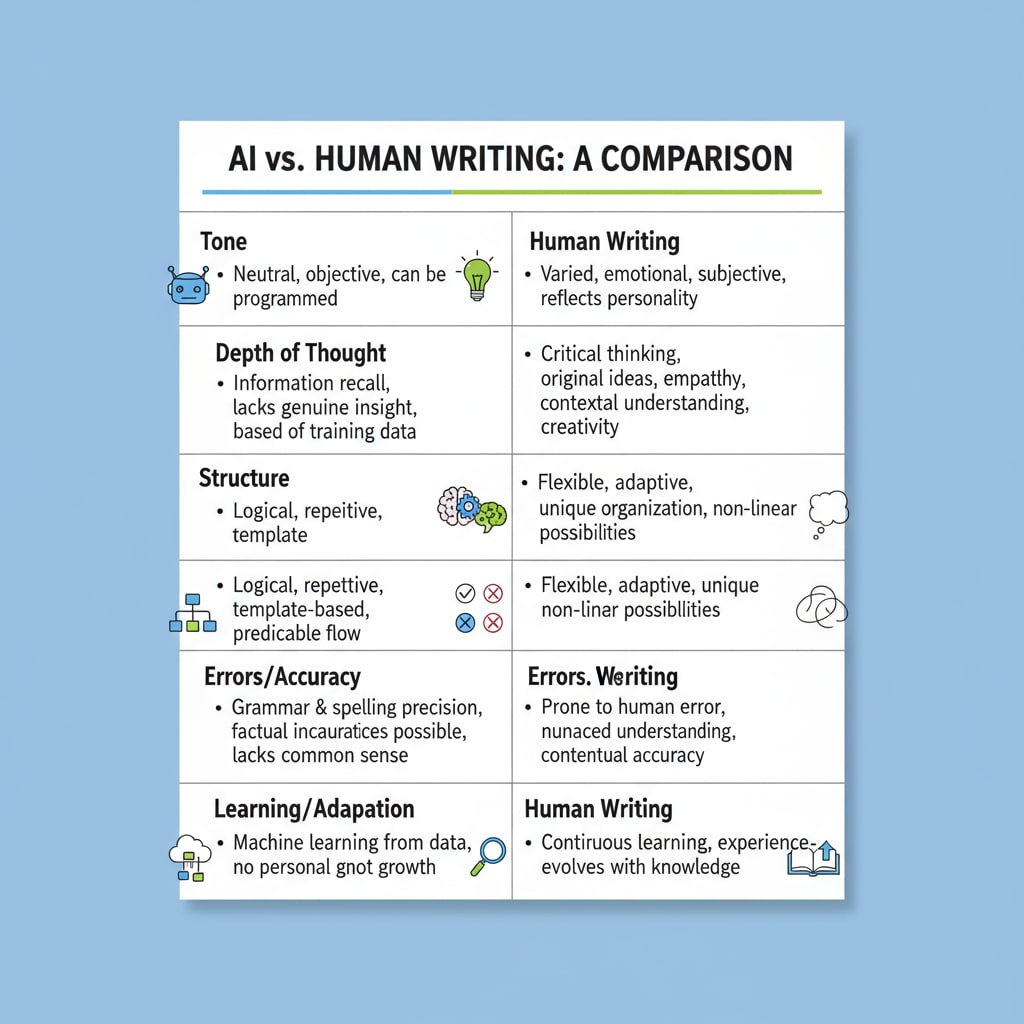In the modern educational landscape, the rise of AI writing tools has introduced a new challenge: helping students understand the differences between AI and human writing, the authenticity in student assignments, and the significance of unique writing styles. As these tools become more prevalent, educators are tasked with equipping students to navigate this digital terrain effectively.

The Challenge of AI in Student Assignments
AI writing has become a double-edged sword in education. On one hand, it offers assistance in tasks like grammar checking and idea generation. On the other hand, it poses a threat to the authenticity of student work. For example, some students might be tempted to use AI to complete assignments, presenting polished but inauthentic pieces. This not only undermines the learning process but also makes it difficult for educators to assess students’ true writing abilities. According to Educause, the use of AI in education is a growing concern that requires proactive strategies.
Identifying AI-Generated Content
Recognizing AI-generated writing involves understanding its characteristics. AI-written texts often lack the depth of thought and personal touch that human writing possesses. They may follow a more formulaic structure and use common phrases repeatedly. For instance, an AI-generated essay might have a predictable introduction, body, and conclusion, without the unique insights and perspectives that a student would bring. Educators can teach students to look for these signs, such as inconsistent tone or a lack of emotional resonance.

Moreover, students can be trained to use tools that detect AI-generated content. These tools analyze various aspects of the text, including vocabulary use, sentence structure, and semantic patterns. By familiarizing themselves with these detection methods, students can become more discerning consumers of written information.
Readability guidance: The above paragraphs use short sentences and simple language to explain complex concepts. Transition words like ‘on one hand’ and ‘on the other hand’ are used to show contrast. Lists could be added in future sections to summarize key points.
The Value of Authentic Writing
Authentic writing is not just about putting words on paper; it’s a means of self-expression. When students write authentically, they are able to convey their unique thoughts, experiences, and emotions. This process helps in developing critical thinking skills as they organize their ideas and present them in a coherent manner. It also allows educators to gain insights into students’ learning progress and understanding of the subject matter.
In addition, authentic writing contributes to the development of a student’s personal writing style. A distinct writing style is what sets a writer apart and makes their work memorable. By encouraging students to write from their own perspectives, educators are fostering creativity and individuality in their writing.
Fostering Authentic Writing in the Classroom
Educators can implement various strategies to promote authentic writing. One approach is to design assignments that require students to draw on their personal experiences. For example, a creative writing assignment could ask students to write about a significant event in their lives. This not only makes the writing more engaging but also ensures that it is rooted in authenticity.
Another strategy is to provide constructive feedback that focuses on the development of the student’s writing style and the expression of their ideas. By highlighting the strengths and areas for improvement in a supportive way, educators can motivate students to continue writing authentically.
Readability guidance: Each section here has a clear focus, and short paragraphs are used to make the content easy to read. Transition words like ‘in addition’ are used to add more points.
In conclusion, in the age of AI writing, it is essential for educators to guide students in differentiating between AI and human writing. By teaching them to recognize AI-generated content and understand the value of authentic writing, we are equipping them with the skills they need to succeed in the digital age. As students develop their own writing styles and express their true selves through writing, they are not only becoming better writers but also more critical thinkers. According to The National Education Association, promoting authenticity in writing is a key aspect of modern education.


